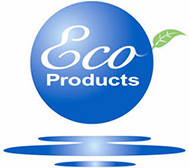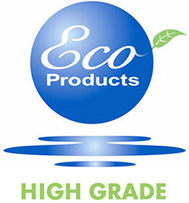Green Products Certification System
Green Products Certification System

In December 2001, SII introduced the Green Product Label System, which is equivalent to the ISO 14021 Type II environmental label. This aims to raise public awareness of our eco-friendly products.
With the business restructuring of the Seiko Group in 2020, we are now operating as the Green Products Certification System of Seiko Group Corporation.
Certification of Green Products
The product eco-friendliness is evaluated using our unique standards for each product group, rated on a scale of one to five. Products achieving an average score of 3.5 or higher (out of 5) are certified as Green Products.
"Consideration for biodiversity" has been newly added to the environmental compatibility factors for Green Product standards since FY 2016.
From FY 2022, the standards have been substantially revised to address the issues of decarbonization and marine plastics. "Scope 3 calculation," "Request for cooperation from suppliers for decarbonization," and "Reduction of Scope 1 & 2" were added to the environmental consideration items in the Green Product Standards to create a system that addresses the reduction of greenhouse gases from a broader perspective. In addition, the existing environmental considerations of "Use of reused parts and recycled materials" and "Smaller, more lightweight packaging" have been made into standards emphasizing "including plastic materials" to make the system more conscious of the need to get rid of plastics and to enable compliance with the Act on Promotion of Resource Circulation for Plastics.
Outline of Green Product Standards
- The 22 environmental compatibility factors apply to each product.
- Each product is rated on the five-point assessment scale for each factor.
"Consideration for biodiversity" has been newly added to the environmental compatibility factors for Green Product standards since FY 2016. - Priority is given to the absolute assessment standards, which are based on the environmental compatibility of other companies' similar products as determined by our own surveys.
Factors that are difficult to evaluate with the absolute assessment standards are rated instead based on the relative assessment standards, which indicate the improvement in environmental compatibility in comparison with previous products. - Whenever possible, the ratings are based on quantitative criteria.
- The assessment standards are revised once every two years.
- The concepts for the assessment ratings are described below.
| Points | Absolute assessment standards | Relative assessment standards |
|---|---|---|
| 5 | Lead runner | Outstandingly better than previous products |
| 4 | In the leading pack | Much better than previous products |
| 3 | In the second pack | Better than previous products |
| 2 | Average | Same as previous products |
| 1 | Inferior | Worse than previous products |
Environmental Compatibility Factors for Green Product Standards
- Power consumption in use
- Power consumption in standby
- Product weight
- Use of reusable parts and parts made of recycled materials (including plastic materials)
- Recyclability of used products
- Longer product life
- Reduction of substances to be avoided*1 contained in goods
- Prohibition of the use of conditionally banned substances*1 in goods
- Prohibition of the use of banned substances*1 in goods
- Smaller or lighter packaging (including plastic materials)
- Reduced use of foam in packaging
- Avoidance of the use of polyvinyl chloride and heavy metals in packaging
- Energy conservation in the manufacturing process
- Scope 3 Calculation
- Resource conservation in the manufacturing process
- Reduced use of substances to be avoided*1 in manufacturing processes
- Prohibition of the use of banned substances*1 in the manufacturing process
- Implementation of Green Purchasing
- Requesting cooperation from suppliers to decarbonize
- Ease of disintegration operations
- Ease of sorting
- Information disclosure in instruction manuals, etc.
- Contribution to improving the environmental performance of our customers' products and preserving the environment we all share
- Consideration for biodiversity
- Reduction of Scope 1 and 2*2
*1 According to the standards set forth in the Green Purchasing Standards
*2 Evaluation of the introduction of renewable energy in the production process
High Grade Green Product Label System

In October 2006, the High Grade Green Product System was introduced as an upper grade certification of the Green Product. "HIGH GRADE" under the green product logo indicates that the product has high environmental performance.
High Grade Green Product Standards
Products that meet the Green Product certification standards and also meet both of the following additional conditions are certified as High Green Products.
In April 2019, we amended our certification system so that in the process of Green Product certification, for those products that meet all necessary conditions, application for High Green Product certification can be carried out simultaneously.
| Basic Requirements | Meets Green Product certification standards. (Mean evaluation score for the Green Product standard evaluation items is at least 3.5) |
|---|---|
| Additional Requirements | 1) Mean evaluation score for the Green Product standard evaluation items is 4.2 or higher. |
| 2) For 5 of the Green Product standard evaluation items, the product has a specific quality for which an explanation of environmental performance, etc. can be provided. |
Certification Process
The Green Products and High Grade Green Products are certified according to the following procedures.
The Green Products are fairly and objectively qualified since their reviews involve engineers and designers from all divisions. In addition, these reviews enhance communication and shared understanding of eco design among divisions.



